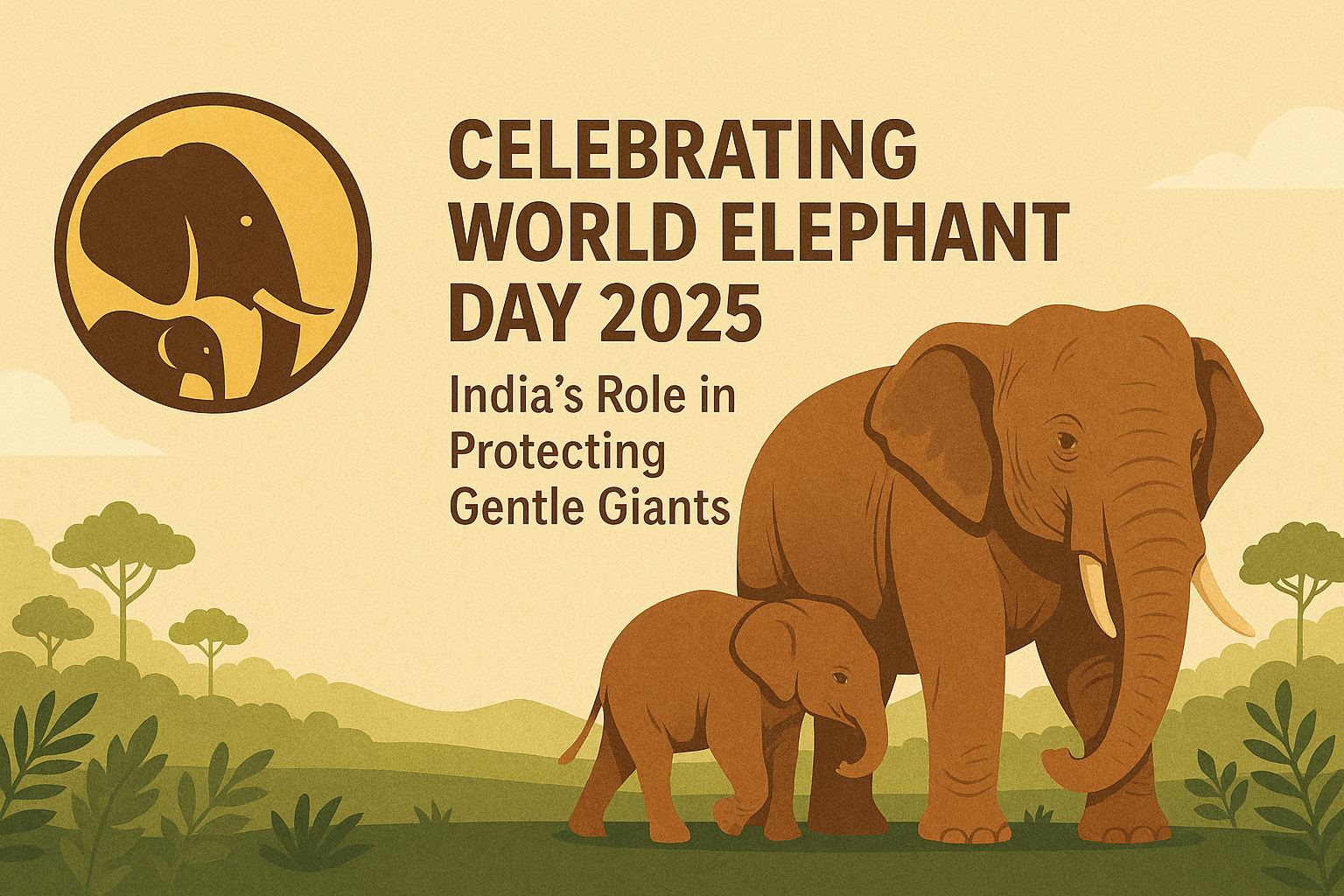1. Introduction
What & When
World Elephant Day is celebrated annually on August 12 to raise awareness about the challenges faced by African and Asian elephants and to rally conservation efforts worldwide.
Origin & Purpose
First observed in 2012 by the Elephant Reintroduction Foundation and Canadian filmmaker Patricia Sims, the day spotlights urgent threats like poaching, habitat loss, human–elephant conflict, and exploitation in captivity. It calls for collective action to safeguard these majestic creatures.
Why India Matters
India is home to nearly 60% of the world's wild Asian elephants, with an estimated 27,000–30,000 individuals in the wild one of the highest concentrations globally.
2. Significance in India
Cultural and Religious Symbolism
Elephants have been revered in India as symbols of wisdom, strength, and prosperity, most notably represented in Lord Ganesha’s elephant head. They feature prominently in festivals such as Kerala’s Thrissur Pooram and are integral to temple rituals across South India.
Ecological Role and Keystone Status
As keystone species, elephants maintain forest ecosystems by dispersing seeds, modifying vegetation, and supporting biodiversity. Losing them would disrupt ecological balance across vast landscapes.
Elephant Reserves & Corridors
India has officially notified 33 Elephant Reserves across 14 states, covering about 80,778 km². Additionally, around 138 elephant corridors have been identified and ground-validated to facilitate safe movement and reduce human-elephant conflict
3. Threats Faced by Elephants in India
- Habitat Loss & Fragmentation: Deforestation, urban development, and agriculture are encroaching on elephant territory.
- Human–Elephant Conflict: Over 50 elephants and 50 people die each year in India due to direct conflict, especially in states like Kerala and Assam.
- Poaching and Ivory Trade: Despite bans, illegal ivory trade persists. Operations like Operation Shikkar have seized hundreds of kilograms of ivory.
- Infrastructure Accidents: Rail and road networks intersect elephant corridors, causing injuries and fatalities.
- Invasive Plants: Species like Lantana camara degrade habitats and push elephants into villages.
4. India’s Conservation Efforts
- Project Elephant (1992): A central government initiative for elephant protection, habitat restoration, and conflict mitigation.
- Elephant Reserves & Corridors: 33 designated reserves and 138 identified corridors help elephants migrate safely.
- NGO Involvement: Groups like Wildlife SOS, WWF-India, and Elephant Family contribute to rescue, rehab, and public education.
- Public Policy & Support: Events and awareness campaigns are often tied to World Elephant Day to reinforce national conservation goals.
5. Celebrations and Awareness in 2025
Theme: “Matriarchs & Memories”
This year’s theme honors the leadership of female elephants and the emotional intelligence of elephant herds.
Major Celebrations Across India
- Tamil Nadu: Trichy’s rehab centre offered special meals to nine elephants.
- Karnataka: Shivamogga’s Sakrebailu Camp introduced two elephant calves and a postal envelope was launched.
- Madhya Pradesh: A special stamp celebrated elephant intelligence and matriarchal strength.
- Coimbatore: Union ministers launched national campaigns involving over 1.2 lakh students.
Engagement Tools
Social media (#WorldElephantDay), school activities, and local clean-up drives encouraged public participation.
6. How People Can Contribute
- Support sanctuaries and rescue centres through donations or volunteer work.
- Choose ethical tourism that does not exploit elephants.
- Report illegal wildlife trade to authorities.
- Raise awareness online and in your community.
- Engage with NGOs promoting corridor protection and conflict resolution.
7. Conclusion
India’s relationship with elephants is sacred and essential. As the global stronghold for Asian elephants, it bears a special responsibility. Through policy, people power, and cultural pride, India can lead the way in preserving elephants for future generations.


